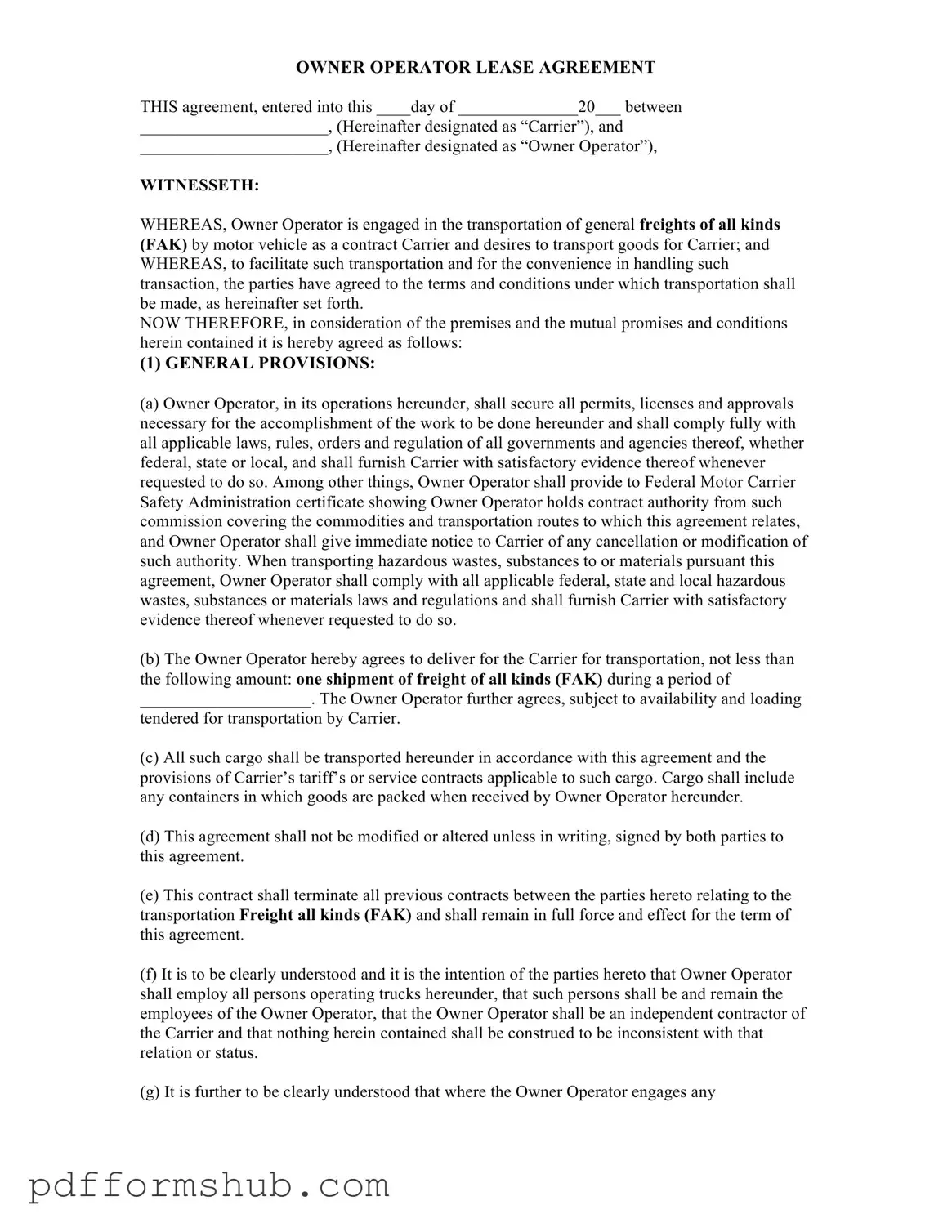Fill in Your Owner Operator Lease Agreement Form
The Owner Operator Lease Agreement is a crucial document that outlines the relationship between a carrier and an owner-operator in the transportation industry. This agreement sets forth the terms and conditions under which the owner-operator will transport goods for the carrier, ensuring compliance with applicable laws and regulations. Understanding this agreement is essential for both parties to protect their interests and facilitate smooth operations.
Ready to fill out the Owner Operator Lease Agreement? Click the button below to get started!
Customize Form
